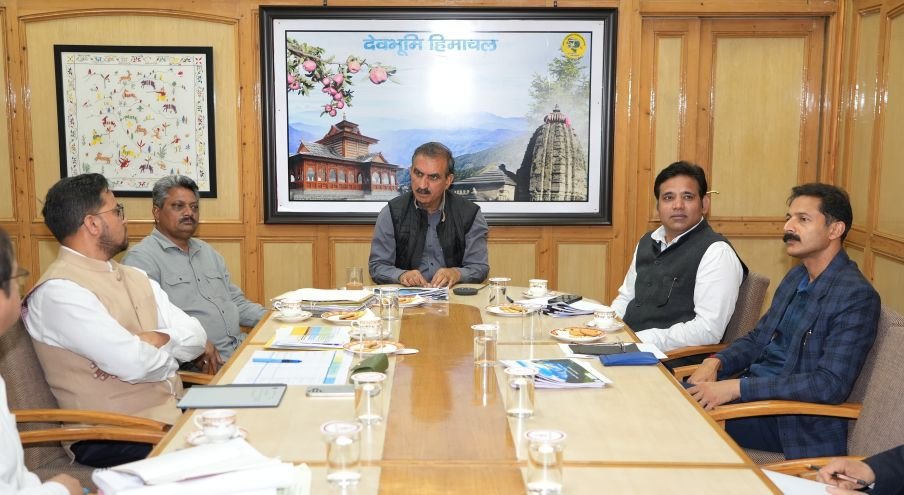
Himachal’s Tourism Triumph: State-Run Corporation Posts Historic Profits Amid Infrastructure Push
- HIMACHALSHIMLATOURISM
- April 30, 2025
- No Comment
- 31
In a significant departure from the usual narrative surrounding state-run enterprises in India, the Himachal Pradesh Tourism Development Corporation (HPTDC) has recorded a profit exceeding ₹100 crore ($12 million USD) for the first time in its history. The development, celebrated as a milestone by Chief Minister Thakur Sukhvinder Singh Sukhu, is being hailed as a validation of the state’s bold recalibration of public sector efficiency, tourism strategy, and infrastructure investment.
Announced during a high-level review meeting of the tourism department in Shimla, the achievement is especially noteworthy given the difficult backdrop of recurring natural disasters that have battered the Himalayan state in recent years. Torrential rains, landslides, and floods have tested the resilience of infrastructure and administration alike. Yet, amid these challenges, Himachal’s tourism sector appears to have not only recovered but surged.
“This is not just a financial figure,” said Sukhu in his address to officials. “It is a reflection of our renewed commitment to efficient management, strategic planning, and tapping into the true potential of Himachal’s natural and cultural assets.”
Public Enterprise, Private Efficiency
The HPTDC’s turnaround from a modest annual turnover of ₹78 crore under the previous administration to ₹107 crore under the current government speaks volumes about the changes in management ethos. The corporation’s success has been attributed to better operational strategies, timely maintenance of hotels and restaurants, and optimized use of state-owned properties.
Unlike many government-run enterprises in India often criticized for sluggishness or inefficiency, HPTDC’s model is increasingly reflecting characteristics associated with agile private sector management. One such move has been the government’s consideration to lease underutilized HPTDC properties to private operators on an “operation and maintenance” basis — an idea long resisted by public sector purists but now embraced as a pragmatic step toward modernization.
With this renewed financial health, HPTDC has also taken a socially responsive path. Over the last two and a half years, the corporation cleared ₹41 crore worth of pension liabilities to retired employees — nearly double the amount settled by the previous regime over five years.
Luxury on the Move and a Vision for Tomorrow
Looking ahead, Chief Minister Sukhu laid out a series of forward-facing directives that underscore Himachal’s ambitions to redefine its position as a premium year-round destination. Among the most anticipated initiatives is the rollout of Hop-on, Hop-off luxury bus services along key tourism circuits — an international model adapted for India’s unique geography. The buses are expected to increase accessibility, reduce last-mile connectivity issues, and enhance the overall travel experience for domestic and international tourists.
The government has also initiated collaborations with the Food and Civil Supplies Corporation to streamline supply chains for HPTDC hotels, a move that aims to ensure consistent quality while promoting local procurement.
At a broader level, the state has committed a substantial investment of ₹2,415 crore (approximately $290 million USD) in developing tourism infrastructure. This includes roads, wayside amenities, adventure sports facilities, and improved sanitation and transport networks — all essential for attracting the high-value traveler who seeks both experience and comfort.
The plans don’t stop on land. Sukhu emphasized rapid operationalization of heliports and expansion of air connectivity through upgrades to Kangra, Shimla, and Bhuntar airports. These developments are intended to solve one of the state’s most persistent challenges: accessibility. Himachal Pradesh, while breathtakingly beautiful, remains difficult to reach quickly due to its rugged terrain. With heli-tourism and air networks in focus, the state aims to attract both time-conscious luxury travelers and medical tourists seeking Himalayan wellness experiences.
Cultural Revival and Natural Splendor
Beyond the business of tourism, the Chief Minister also stressed the spiritual and aesthetic dimensions of Himachal’s attractions. He urged completion of the Shivdham project in Mandi — envisioned as a spiritual and cultural landmark — and beautification of the sacred Renuka Lake, a site of deep mythological and ecological significance. These efforts are part of a wider initiative to marry development with heritage preservation, striking a delicate balance between economic aspirations and environmental stewardship.
A Model for Mountain Economies?
As climate change increasingly affects mountain regions across the globe, Himachal’s ability to build a resilient, diversified, and sustainable tourism economy could serve as a model for other hill states — from Nepal to Peru. While challenges remain, including ecological fragility and over-tourism risks, the state’s integrated approach — leveraging public infrastructure, private efficiency, and community engagement — offers a promising template.
In an age where government-led ventures are often associated with stagnation, Himachal Pradesh’s tourism transformation tells a different story — one where strategic vision, fiscal responsibility, and cultural preservation converge to shape a progressive narrative in the Indian Himalayas.
#HimachalTourism #SustainableTravel #MountainEconomy #IndiaTravel #PublicPrivatePartnerships
This is an auto-generated news web feature for international syndication.



